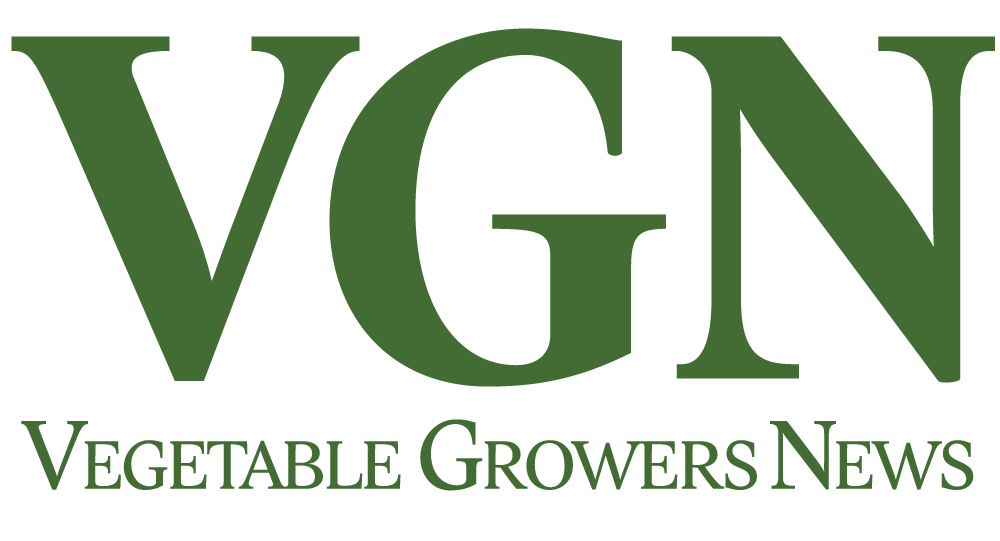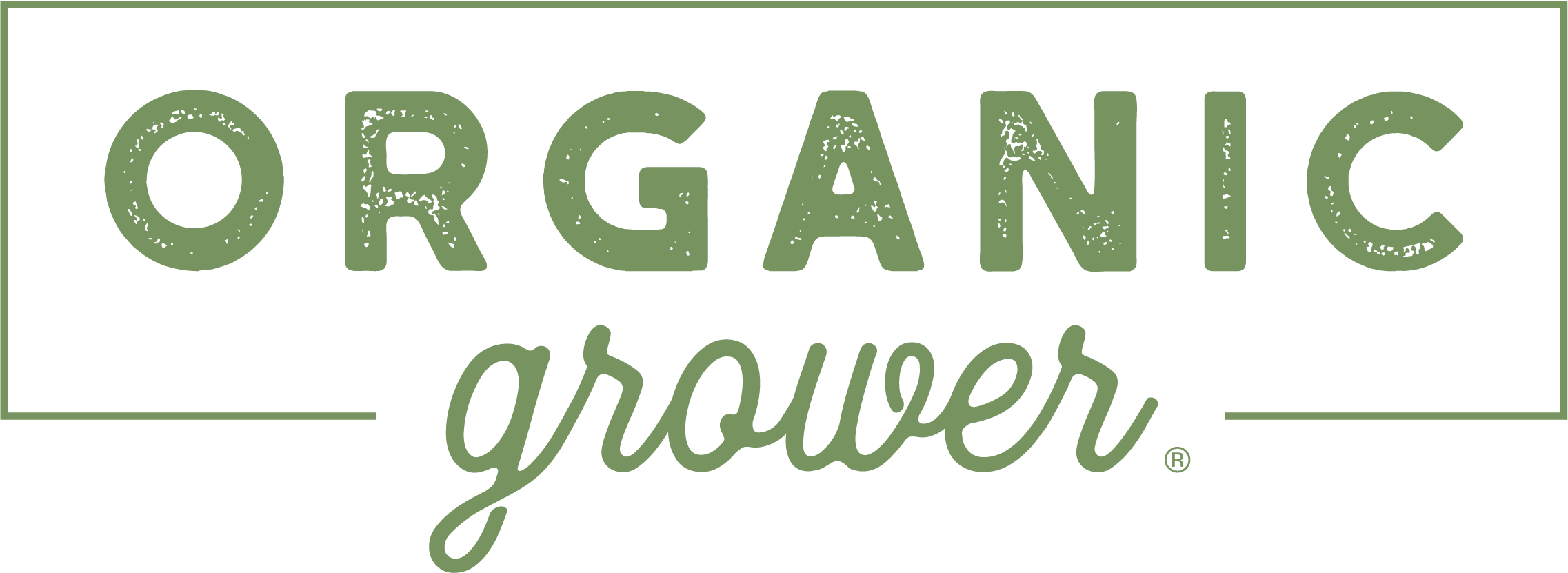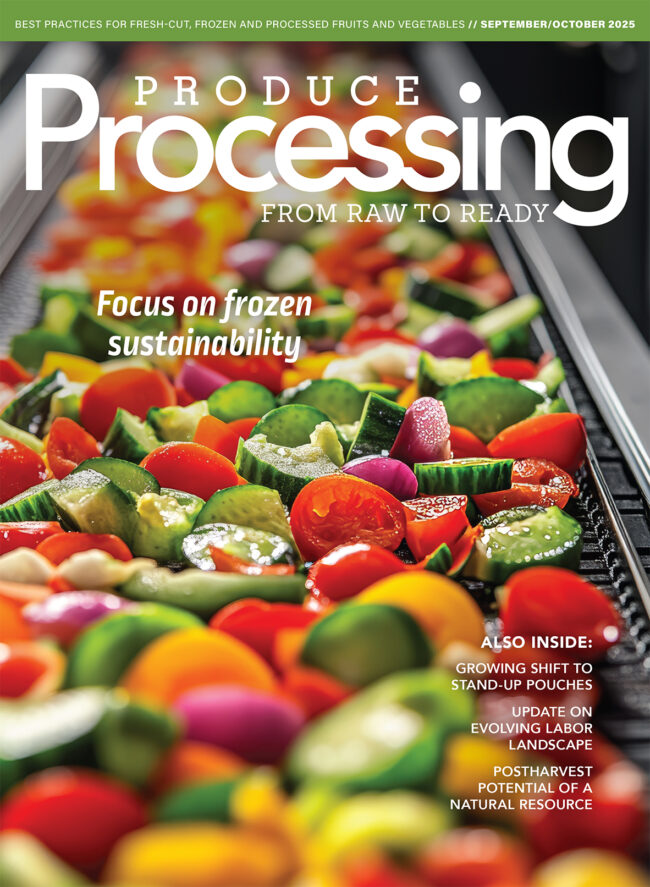Automation answers helping mitigate costs, labor shortages
From inflationary pressure on inputs and rising costs to a shortage of workers across the produce industry, it is clear that fruit and vegetable processors face significant challenges to remain profitable. Many companies are looking to automation for a solution.
From incorporating artificial intelligence (AI) to pre- programmed systems, suppliers are offering a range of sophisticated solutions that take the pain out of running a cost-effective, hygienic sorting line.
LASER-FOCUSED INSPECTION
Located in Walla Walla, Washington, Key Technology provides processing systems and equipment for industries from produce and nuts to poultry, seafood and dairy.
One of its most impactful for the frozen french fry and potato industry has been a system known as the ADR (Automatic Defect Removal), invented by Key in the 1980s, according to senior sales director Bret Larreau.
“We transport french fries along a belt system and through an imaging station where we have a high-speed cutting system which cuts out any little black dots on the fries,” Larreau said. “That revolutionized the potato industry with labor savings that were unparalleled, because the prior process was that people would use trim tables and trimming knives to remove bruises, rot and discoloration from the potato after it was peeled.”
Another detection solution, the 2016-launched VERYX Optical Sorter, uses an imaging system to monitor the product flow and identify defects within seconds.
“We sort by lots of different characteristics; typically color, shape or material properties,” Larreau said. “We can actually see the difference between a white piece of plastic and a white potato very easily with a laser imaging system.
“That has really removed labor in the factories, because somebody always had to manually sort.”
Sorting technology has also been effective with blueberries. Traditionally, Larreau said workers on a sorting line detected soft blueberries by hand. Now, Key’s laser imaging system automatically identifies softer berries, which absorb more energy than a firm fruit.

SOLVING LABOR CHALLENGES
The demand for labor-saving technology depends on where customers are located, said Sander Reukers, export manager at Netherlands-based produce machinery specialist Greefa. He said European countries rely on immigrants from countries such as Romania and Bulgaria to work in fields and packing houses.
“About 10 years ago, there was an abundance of labor from Poland, but with the growth of the Polish economy, companies now need to look for workers elsewhere, and the availability and continuity of this labor has been difficult for European growers and packers,” Reukers said. “Relying on immigrant labor has become more and more difficult, minimum wages are increasing on a rapid scale, and other costs are rising quickly, which makes it very attractive for companies to look at automated solutions.”
Greefa offers automated transportation of produce bins and automated logistics for boxes and pallets as well as robotic cameras placed on graders to review fruit quality.
“We make sure every apple transported along the line is of the right quality, size and color, so people standing alongside the belt will only have to pack,” Reukers said. “This means they can increase their packing volume by not having to review the quality of the apples.”
Greefa’s robotic packing units also come equipped with cameras. The purpose, Reukers said, is to give fruit a final quality review before it enters the boxes.
“Say for instance an apple transported by belt comes into the machine,” he said. “It goes onto rollers which rotate the fruit 360 degrees to be reviewed by cameras and identify where on the apple most of the color is. It is then packed into a box or a tray by means of a robot.”
FOCUS ON FRESH-CUT
Joost Lotgerink Bruinenberg, global sales manager at JBT FTNON, a Netherlands-headquartered fresh cut machinery supplier, said optimizing labor and ensuring optimum food safety is especially relevant for the fresh- cut industry. Consumers expect safe, ready-to-eat products that require little cleaning or preparation despite their production line origins.
JBT FTNON provides automated washing and drying solutions for fresh-cut processors which require little human intervention, Lotgerink Bruinenberg said.
“We work with preprogrammed settings, so the operator only needs to change the recipe,” he said. “FTNON’s solutions work with material from the field: If you want to de-core a bell pepper or a lettuce, we can semi-automate that process. In the U.S., where a lot of companies still use manual basket spinners, we can save on labor by replacing them with in-line, automated drying solutions.”
The company’s automated onion peeler reduces the number of required workers from four to one or two, while its automated bell pepper de-corer reduces line workers from an average of five to two, Lotgerink Bruinenberg said.

DEEP LEARNING DIVE
One of the ways Belgium-based equipment supplier TOMRA has been able to help customers save on labor is through its advanced deep learning AI system, according to product manager Kristof Franckx.
“By adding advanced deep learning onto current camera systems, we are able to create a lot more value for end customers,” Franckx said. “We are able to detect subtle defects that are not necessarily visible by optical contrast. This has increased the efficiency of existing lines and upgradable lines.”
Franckx said AI-based systems can rapidly learn to recognize defects, making the technology especially valuable for products such as cherries which have short production windows and in areas where human training can be slow and employee turnover high.
“It adds value and improves throughput, especially on the really subtle defects such as cracks where the stem is attached to the cherry,” he said. “It allows customers to run lines more efficiently with less need for inputs and adjustments, because typically you would need to adjust parameters depending on the size of the cherry.
“It removes the need for a skilled operator and reduces the time spent training. That’s the real strength of deep learning.” Franckx said AI systems such as deep learning mimic the way the human brain works through a multi-layered neural network.
“It can detect defects with a lot more accuracy and identify different, unique defects through pattern recognition,” he said.
However, such systems have to first be trained, which takes time and human labor.
“Someone has to click on the images and say, ‘This one is good, this one is bad,’ etc., so the investment upfront is heavy, but the end result is the latest technology,” Franckx said. “Our deep learning system gives customers the ability to rely on it without needing an army of skilled people.”
For Franckx, the proof is in the numbers.
“The average efficiency for manual picking for a human being sitting at a belt and looking for defects is between 20% to 40%; with automated detection it’s between 80% to 90% because it doesn’t get tired and is able to find things that are impossible for the human eye to see,” he said.
ADAPTATION HURDLES
Affordability and accessibility remain questions surrounding AI, especially for small- to medium-sized produce processors.
“Typically, they are affordable because our lane-grading scale is quite linear,” Franckx said. “So unless you are really on the low-capacity side, I would say even a small or medium player can have the same type of sensor equipment as a big company.”
Reukers at Greefa said investments in automated solutions can be lucrative provided processors have sufficient volume to keep the machine running continuously and don’t need to change packaging regularly.
“It’s difficult to automate when your type of package keeps changing,” Reukers said.
Reukers said the number of companies using labor-saving solutions has increased significantly in Europe in recent years as finding labor has become more challenging.
“We don’t expect this situation to get any better over the coming years, let alone because of the wages,” he said.

CONVENIENT CLEANING
For Lotgerink Bruinenberg at FTNON, the key to ensuring food safety on a sorting line is cleanability. He said FTNON designs its machines to be easily accessible by eliminating shapes and crevices that are prone to bacterial growth.
“We ensure cleanability by making the system as open as possible,” he said. “There’s a saying: ‘If you can’t see it, you can’t clean it.’ We make sure the cleanliness of the system can be monitored by having a built-in, hygienic design with an open structure and no square tubes.”
FTNON equipment can also prewash products, he said.
Reukers said Greefa focuses on reducing cross-contamination on its sorting lines and packing machines.
“If an apple is contaminated — or the soil is contaminated because it usually comes from the soil, not so much the fruit — the contamination is already there before it goes onto our machines,” he said. “Because of the fact that most fruit that goes onto a sorting line is transported by water, we can provide our customers with a filtration system, and this is the basis of where you can reduce contamination.”
As well as using a combination of active carbon, quartz and sand
to filter out debris, Greefa provides solutions which contain hydrogen peroxide and use ultraviolet rays to kill bacteria present in the fruit or the soil. Machine parts in direct contact with the fruit are washable in addition to being constructed from stainless steel and washable plastics.
“For these elements, we don’t make use of any grease or lubricants, and all electronics surrounding them need to be at a certain level of auto- resistance,” Reukers said.
Franckx said TOMRA systems can detect and remove the majority of hazardous items and foreign material, such as glass, metal and plastics, while Larreau said Key’s optical sorters are able to differentiate small foreign objects that could otherwise be missed by the human eye on a moving line.
“If you were to get a rock that looked kind of like a blueberry color-wise and could be missed if you weren’t paying attention, the sorter sees that as a different material and will remove it,” Larreau said.
Key’s multi-spectral camera technology also inspects the top and bottom of products.
“In the lettuce industry, you’ll get insects that are often underneath a leaf,” Larreau said. “We are able to look above and below to see whatever foreign object there is. For example, we can differentiate between a small, green caterpillar and a spinach leaf, even though they might have the same size and shape.”
In the walnut industry, where standards typically only allow one piece of shell per 500 pounds, laser imaging can also play an important role.
“The material property of the shell is different from the meat of the walnut, and this solution discerns super precisely the different behaviors of the material that flows through the machine,” Larreau said.
Whichever solution a processor chooses, it is clear that increasing numbers of companies are looking to automation to tackle issues of labor shortages and food safety.
“One thing you’ve got to hand to the processors is they really spare no expense to make their food safe,” Larreau said. “There’s typically five or six technologies in a line from the raw product to the finished package, so there are multiple fronts on which foreign objects are found, and you really do pretty much need all of them.”










